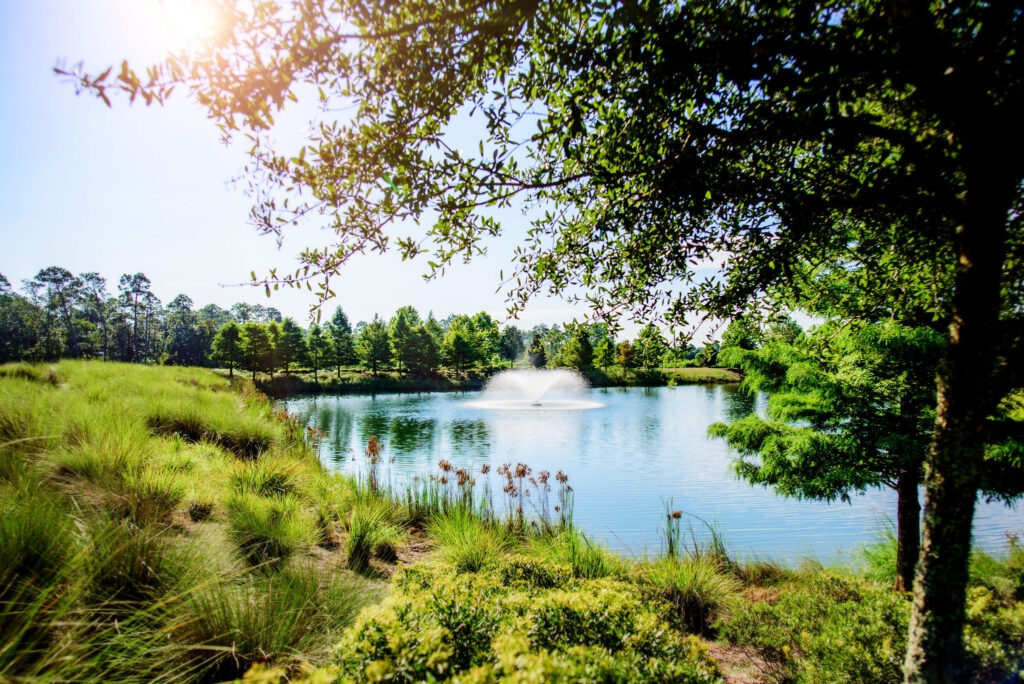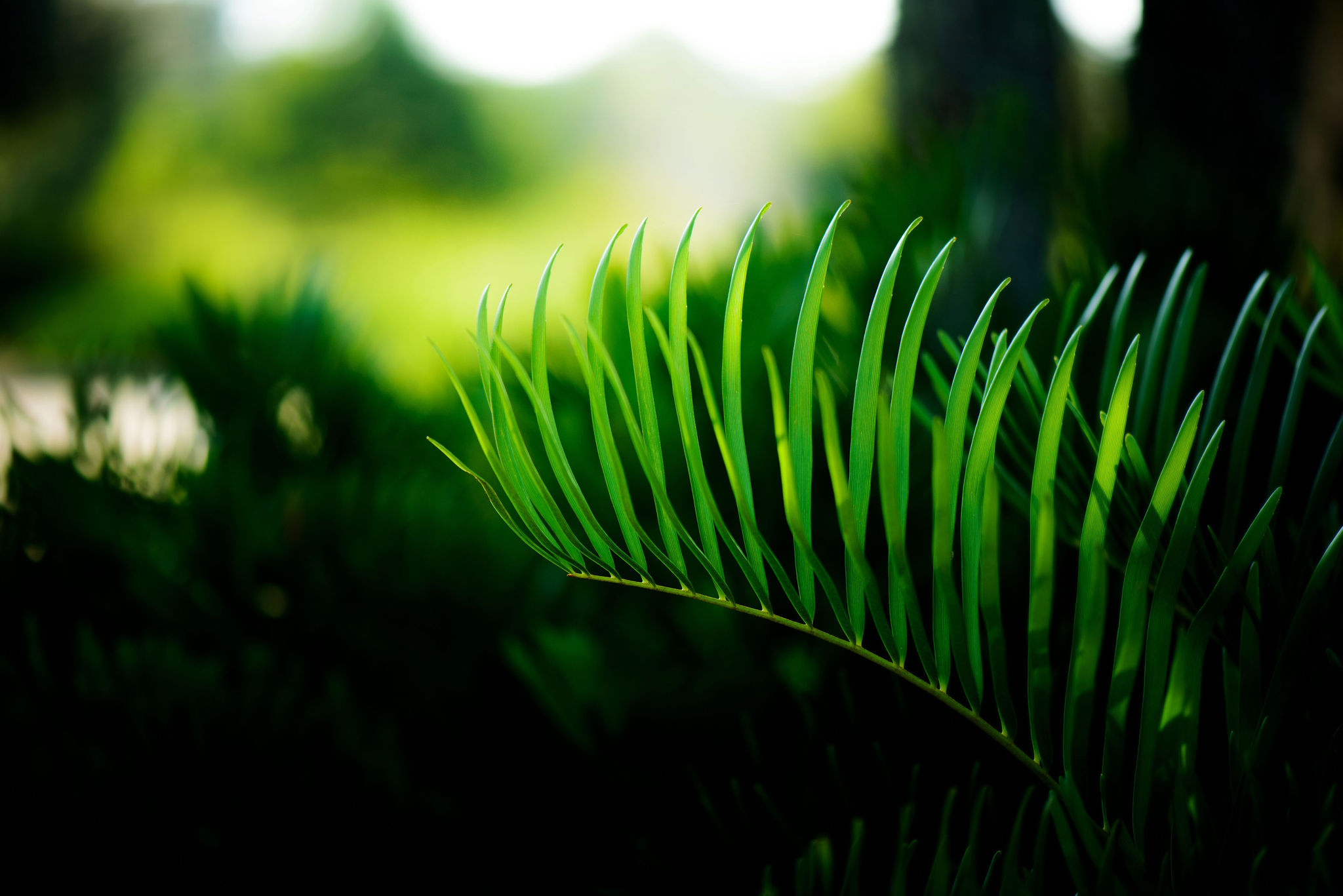Golfweek Features Jerry Pate Design and Teeth of the Dog - Read More
Getting the most for your money and being as environmentally friendly as possible may seem like competing ideals. Commercial landscaping is an area where both goals can coexist, however. Designing a sustainable commercial landscape can have a positive impact on your balance sheet, the environment and your public image, all at the same time.
What is Sustainable Landscape Design?
Sustainable landscape design is all about minimizing the negative impact of landscaping and promoting a positive ecological balance. Working with nature rather than trying to overcome it helps to make sustainable landscaping both less costly to manage and better for the long-term health of the ecosystem. A healthy and more natural ecosystem in turn requires less resources to maintain while providing an enjoyable outdoor space.
Principles of Sustainable Landscape Design
When focusing on minimizing impact on the environment, there are some main tenets to keep in mind.
Conserve Water

One of the most important goals of sustainable landscape design is to reduce water consumption. Limited water resources have become a hot topic in many areas of the country, and reducing consumption is not only an environmentally conscious action, but also leads to lower water bills. Drought-tolerant landscaping designs require less water to maintain and efficient water management techniques help to conserve water by only using what is needed to keep plants healthy. Grouping plants by their water requirements also helps to reduce consumption.
The use of large amounts of supplemental irrigation to keep plants healthy and lawns green often results in a lot of wasted water. Well-maintained and efficient irrigation systems can help to reduce that waste. Regular inspections should be scheduled to find leaks, ensure efficient watering patterns and confirm timer operation. New irrigation technology allows for precise scheduling and can automatically adjust output based on current soil conditions and expected precipitation.
Retaining precipitation for later use through rainwater collection is another way to limit water use. The use of gravel instead of concrete wherever possible can help to ensure that water is absorbed into the ground rather than simply running off.
Reduce Chemical Use
Pesticides, herbicides and fertilizers often seem like a necessity to keep a landscape looking as good as possible. In reality, we often use more chemicals than are really necessary. Pesticides also indiscriminately kill off many beneficial insects and runoff can be extremely harmful to the environment when it reaches waterways where it can kill fish and wildlife. Integrated pest management, which focuses on applying targeted pest control only when and where needed can help to reduce the amount of pesticides used. Organic fertilizers are a much less harmful way to provide plants with the nutrients they need.
Reduce Soil Erosion
Reducing soil erosion has a positive impact on both supplemental water use and the environmental impact of chemical use. Designing terraced beds, mulching and planting groundcovers are effective ways to prevent soil erosion. Mulching helps to retain moisture in the soil, with the added benefits of weed control and improved appearance of planting beds. The roots of groundcover plants help to reduce erosion by stabilizing the soil, while their leaves lessen the impact of rain. The result of erosion prevention techniques is that topsoil and nutrients are retained, helping to create a healthy soil biology.
Plant Native
In our recent Low-Maintenance Plants post, we discussed the distinct advantage that native plants have because they are already adapted to the local climate. Native plants are typically more resilient and require a lot less supplemental watering because they’re drought tolerant. They are also tolerant of local pests and require less pesticide use. An added bonus is that they often require significantly less maintenance. Even a portion of the commercial landscape set aside for native plants can significantly add to sustainability.
Promote Biodiversity

Reducing pesticide use and planting native plants go hand-in-hand with creating an environment that attracts and supports local wildlife. Wildlife-friendly areas provide a safe haven for birds and butterflies that can make your landscape even more attractive and enjoyable for visitors.
Reduce Energy and Resource Use
Sustainable landscape design concepts can have an impact on other areas of environmental responsibility, as well. Planting deciduous trees on the southern and western sides of a building can reduce the amount of energy used for cooling during the hottest parts of the day and the warmest months of the year. A green roof, which essentially creates a vegetative layer on top of a building, is a costly endeavor, but can lead to significant energy savings. Using recycled and locally sourced materials for landscaping can also make a positive environmental statement.
Benefits for Your Company
By this time, you may be asking why your organization should invest time and energy into designing a sustainable commercial landscape. The ecological benefits are clear, but what about the benefits for your company? There are a number of reasons that sustainable landscape design makes sense.
Corporate Image
The primary value of investing in landscaping is improving the image of your company, and sustainable landscape design takes it to the next level. Employees and customers alike will appreciate the enjoyment and sense of calm that a well-designed landscape can bring. Seating areas with signage highlighting eco-friendly initiatives can help to make them aware of the steps your company is taking to protect the environment. A LEED certification will leave them even more impressed with the organization’s commitment.
Cost Savings
Sustainable landscape design can also have a positive impact on the budget. Cost savings will be realized from reduced water and chemical use. The use of native plants and groundcovers can also lead to reduced maintenance costs. Energy savings can be a positive benefit, as well. i-Tree from the USDA Forest Service is an interesting tool that can help you calculate savings from thoughtful shade tree planting, for instance.
Increased Patronage and Tenancy
Many shoppers, employees and prospective tenants look for organizations that value positive environmental action as much as they do. A genuine effort to promote sustainable landscape design can be a great selling point. In fact, studies have shown that properties with sustainable design attributes sell for up to 7% more than those without.
Explore How Designing a Sustainable Commercial Landscape Can Work for You
The benefits reaped from eco-friendly landscaping are many, for both the environment and for the property owner. Let the experts at Jerry Pate Design show you how we can assist you in designing a sustainable commercial landscape.

